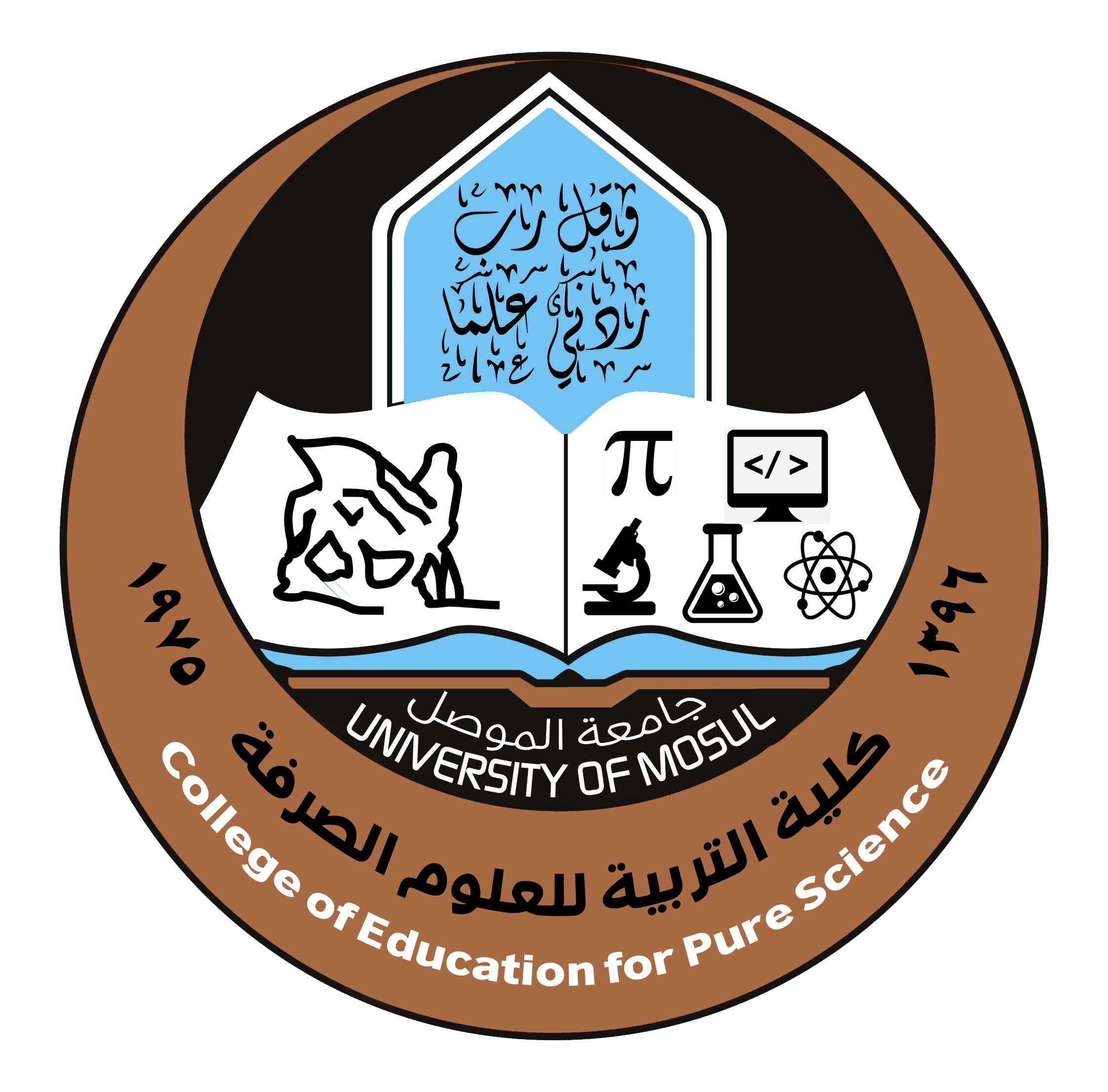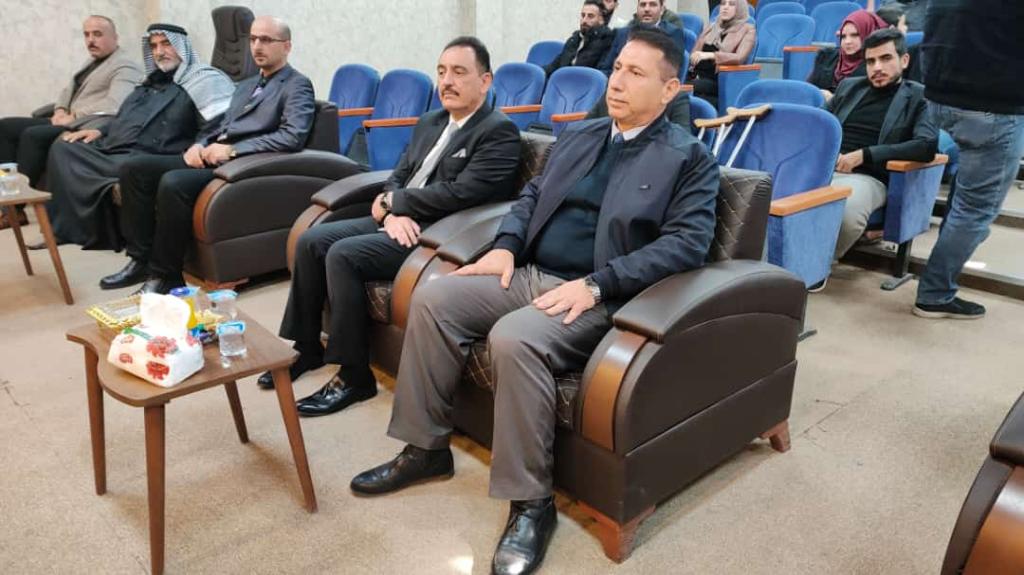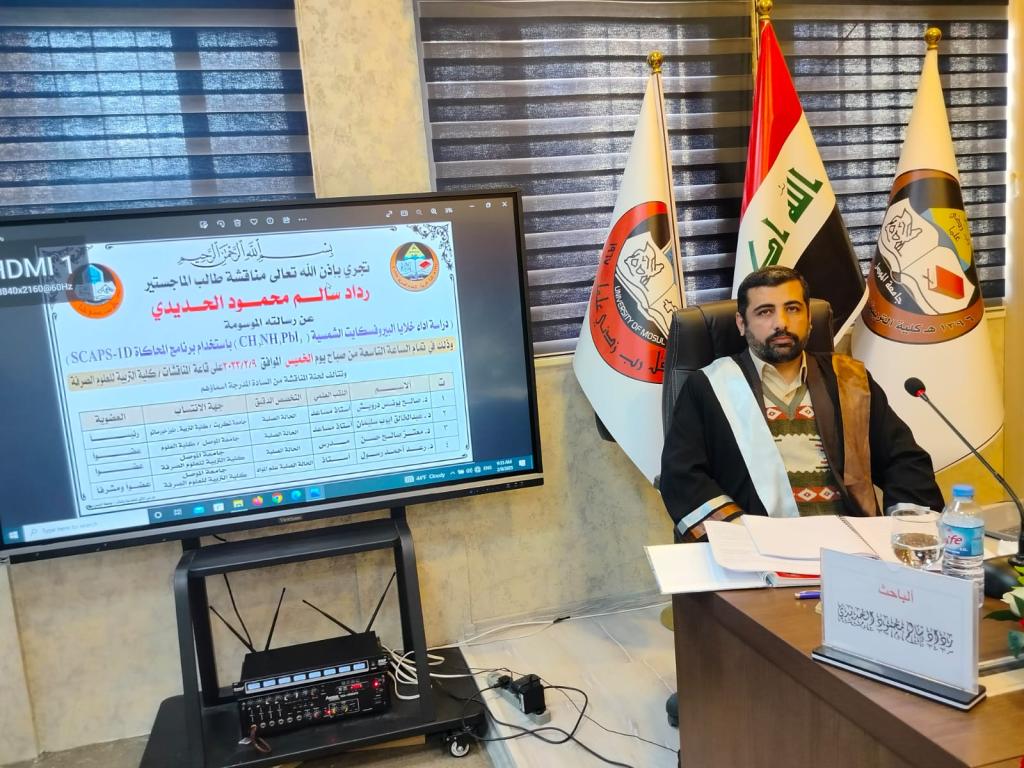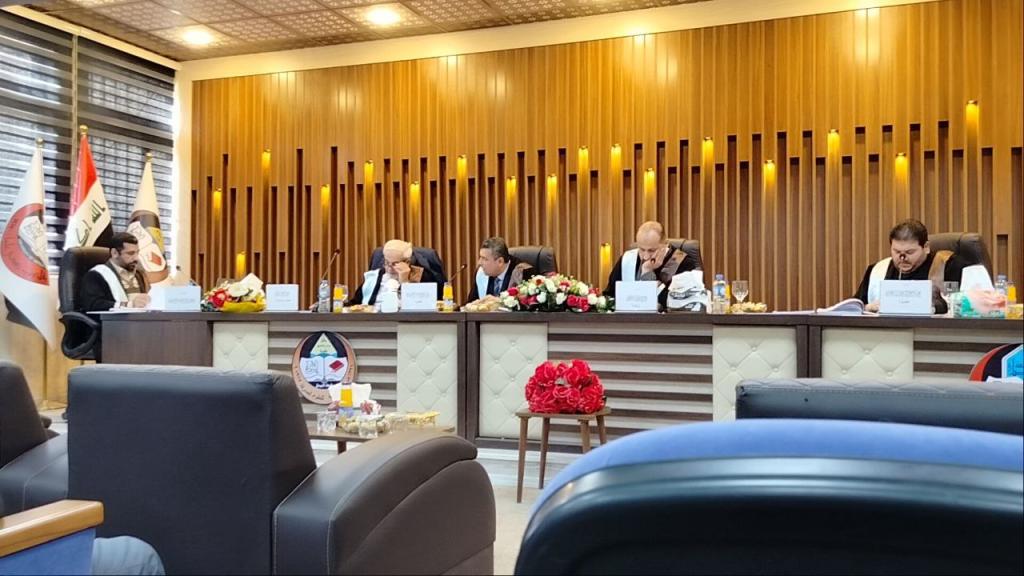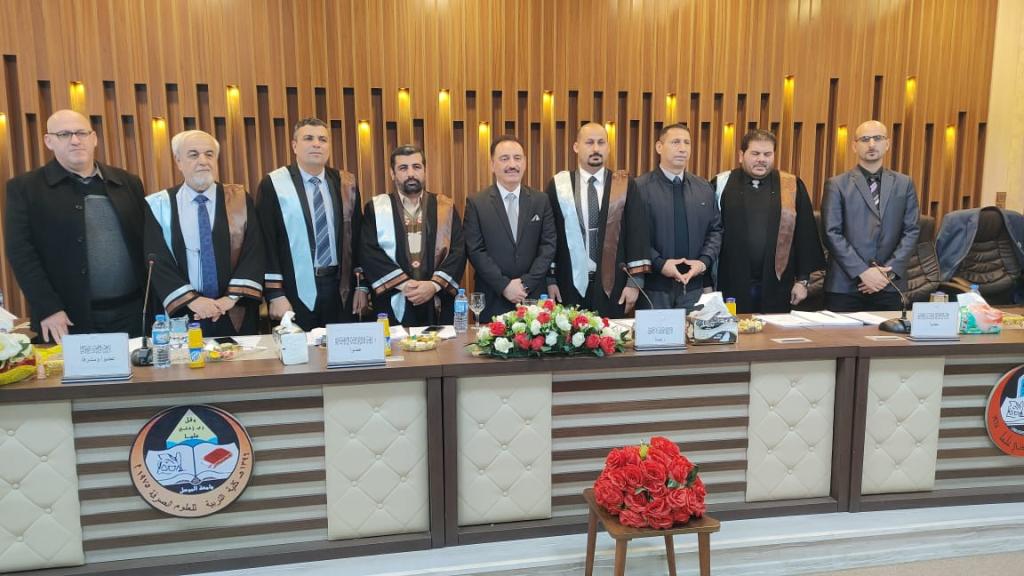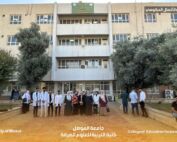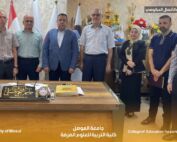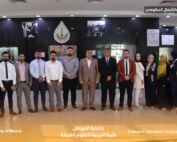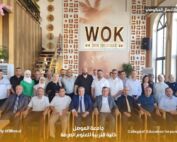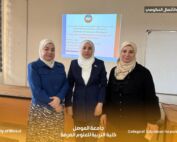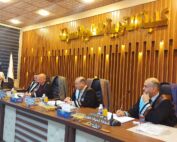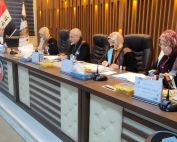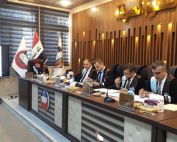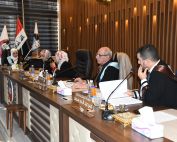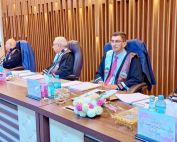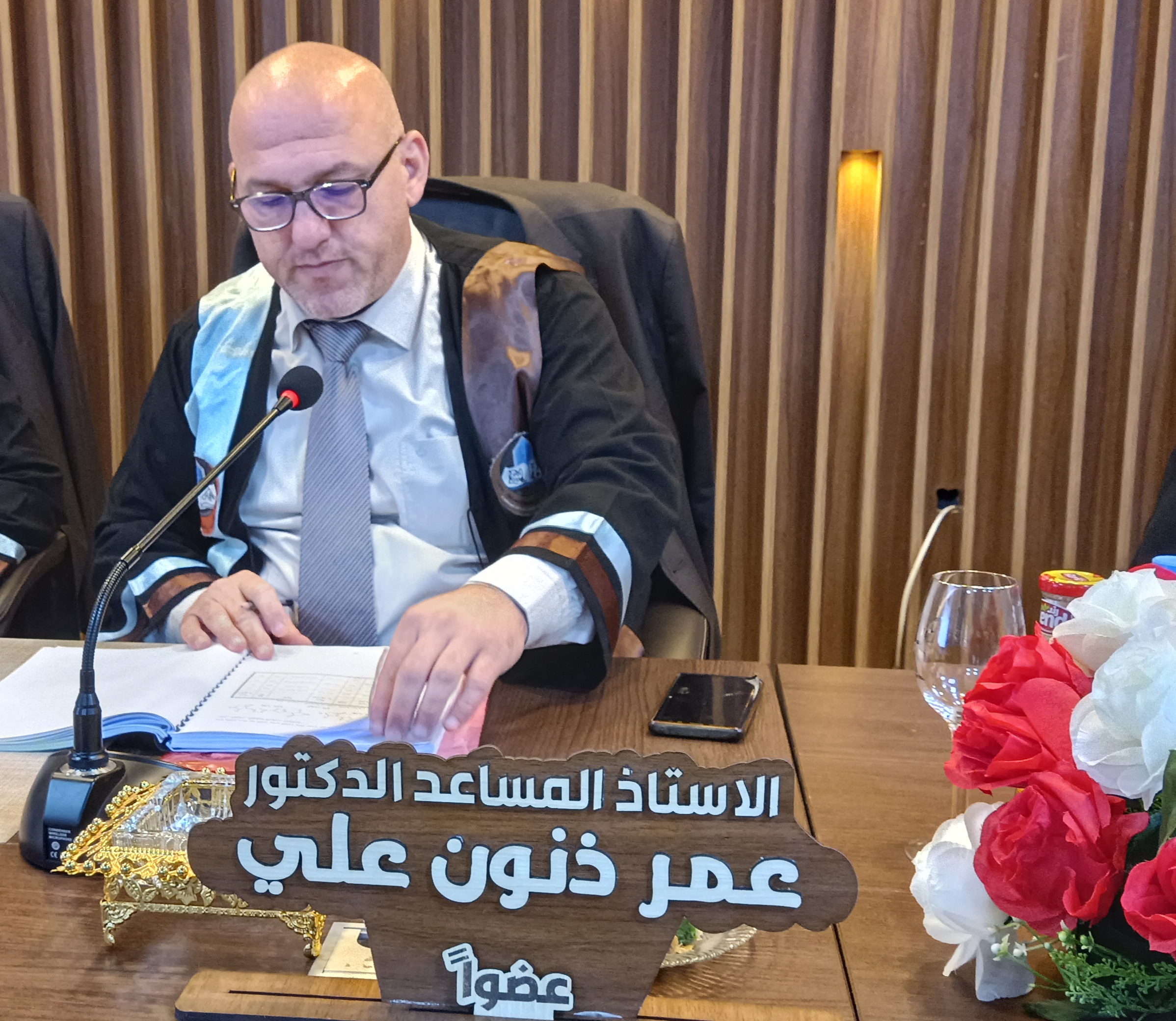9 February، 2023
Master Thesis Viva- Physics Department

Master Thesis Viva in the College of Education for Pure Science entitled ” Studying the performance of perovskite solar cells (CH3NH3PbI3) using SCAPS 1-D simulation program “The College of Education for Pure Science, University of Mosul, has done the Master Thesis Viva entitled ” Studying the performance of perovskite solar cells (CH3NH3PbI3) using SCAPS 1-D simulation program “,On Thursday, February 9, 2023, the respected president of Mosul University proffessor doctor Kusay Kamal Al_Din Al Ahmady and the College staff including the respected Dean of the College, Assistant Professor Dr. Qais Ismail Ibrahim, the Honorable Scientific Associate and Administrative Associate, the Honorable Head of the Department of Physics, and a number of the college’s teachers were attended the viva. In this study, presented by the Master student Raddad Salem Mahmoud in the Department of Physics, the structure of the solar cell with the highest efficiency has been made and consisted of five layers that were the Back Surface Filed Layer and Zinc Telluride (ZnTe) was selected, Absorber Layer (perovskite) (CH3NH3PbI3) was selected , the Buffer Layer, which is titanium oxide (TiO2), the window layer, which is zinc oxide (ZnO), and the transparent conductive oxide layer, which is fluorine doped tin oxide (FTO). It was designed after testing many materials for each layer separately for the layers of the solar cell and selecting the best layer which has the highest efficiency of the solar cell. The computer program (SCAPS-1D) was used to simulate the structures of solar cells. After fixing each layer of the solar cell, the effect of changing the thickness of the selected layer on the output of the solar cell has been studied that are open circuit voltage (VOC), fill factor (FF), short circuit current density (JSC), cell efficiency (ƞ).The final structure of the cell adopted in this study consisted of layers and thicknesses as follows:ZnTe= (0.05 µm), CH3NH3PbI3= (1 µm), TiO2= (0.05 µm),ZnO= (0.1 µm), FTO= (0.1 µm).The effect of adding the window layer on the thickness of the buffer layer was also studied and it was found to help in reducing the thickness of the buffer layer where the thickness of the buffer layer was reduced (TiO2) from (0.5 µm) to (0.05 µm) after adding the window layer, which works to reduce the forward leakage current, which leads to an increase in the efficiency of the solar cell. Also the effect of the thickness of the (BSF) Back Surface Filed Layer on the thickness of the absorber layer and the efficiency of the solar cell was studied and it was found that adding the BSF layer to the solar cell contributed to reducing the thickness of the absorber layer from (5µm) to (1µm) and the efficiency of the solar cell increased from (27.35%) to (28.82%). Also the effect of changing the temperature on the parameters of the solar cell was studied and it was found that the efficiency of the solar cell (ƞ) decreased with increasing temperatures. The study was carried out by fixing the lighting spectrum on the international scale (AM 1.5), temperature at (300 K) frequency(1 MHz) and series resistance (RS) and parallel resistance (RSH) were not activated considering that the studied cell was an ideal cell.The Viva committee was chaired by Asst. Prof. Dr. Salih Yunis Darwish/ University of Tikrit / College of Science-Tuzkhurmatu and the membership of Asst. Prof. Dr. Abdul-Khaliq Aywb Sulayman /University of Mosul / College of Science, Lecturer Dr. Muetaz Salih Hasan/University of Mosul / College of Education for Pure Science and under the supervision and membership of Prof. Dr. Raad Ahmed Rasoul/University of Mosul / College of Education for Pure Science.
